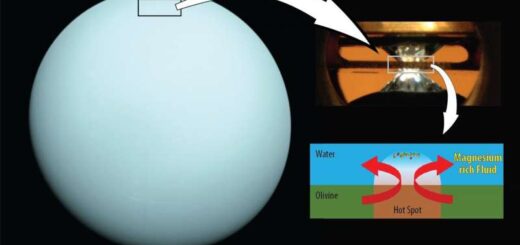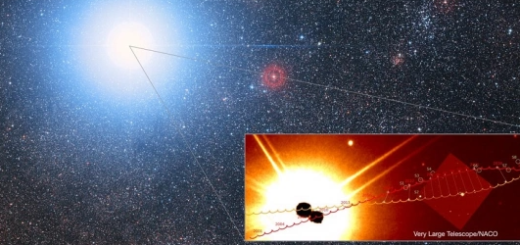In first, scientists trace fastest solar particles to their roots on the Sun

Zipping through space at close to the speed of light, Solar Energetic Particles, or SEPs, are one of the main challenges for the future of human spaceflight. Clouds of these tiny solar projectiles can make it to Earth—a 93 million mile journey—in under an hour. They can fry sensitive spacecraft electronics and pose serious risks to human astronauts. But their onset is extraordinarily hard to predict, in part because we still don’t know exactly where on the Sun they come from.
A new study tracing three SEP bursts back to the Sun has provided the first answer.
“We have for the first time been able to pinpoint the specific sources of these energetic particles,” said Stephanie Yardley, space physicist at the University College London and coauthor of the paper. “Understanding the source regions and physical processes that produce SEPs could lead to improved forecasting of these events.” Study authors David Brooks, space physicist at George Mason University in Washington, D.C., and Yardley published their findings in Science Advances on March 3, 2021.
SEPs can shoot out from the Sun in any direction; catching one in the vastness of space is no small feat. NASA’s Heliophysics System Observatory—a growing fleet of Sun-studying spacecraft, strategically placed throughout the solar system—was designed in part to increase the chances of those lucky encounters.
Scientists have divided SEP events into two major types: impulsive and gradual. Impulsive SEP events usually happen after solar flares, the bright flashes on the Sun produced by abrupt magnetic eruptions.
“There’s this really sharp spike, and then an exponential decay with time,” said Lynn Wilson, project scientist for the Wind spacecraft at NASA’s Goddard Space Flight Center in Greenbelt, Maryland.
Gradual SEPs last longer, sometimes for days. They come in large swarms, making the blasts a bigger risk to astronauts and satellites. Gradual SEPs are pushed along from behind by coronal mass ejections, or CMEs—large plumes of solar material that billow through space like a tidal wave. The SEPs act like surfers, caught by that wave and propelled to incredible speeds.
The greatest mystery about gradual SEPs is not what speeds them up, but where they come from in the first place. For reasons still not fully understood, SEPs contain a different mix of particles than the other solar material streaming off the Sun in the solar wind—fewer carbon, sulfur, and phosphorous ions, for instance. Some scientists suspect they’re cut from an entirely different cloth, forming in a different feature or layer of the Sun than the rest of the solar wind.
A close-up view of one of the flares from AR 11944 emitted on January 7th, 2014. This flare may be how the SEPs detected by Wind were released from the Sun. Credits: NASA/SDO
To find out where SEPs come from, Brooks and Yardley traced gradual SEP events from January 2014 back to their origin on the Sun.
They started with NASA’s Wind spacecraft, which orbits at the L1 Lagrange point about 1 million miles closer to the Sun than we are. One of Wind’s eight instruments is the Energetic Particles: Acceleration, Composition, and Transport, or EPACT instrument, which specializes in detecting SEPs. EPACT captured three strong SEP blasts on January 4th, 6th and 8th.
Wind’s data showed that these SEP events indeed had a specific “fingerprint”—a different mix of particles than is typically found in the solar wind.
“There is often less sulfur in SEPs compared to the solar wind, sometimes a lot less” said Brooks, lead author of the paper. “This is a unique fingerprint of SEPs that allows us to search for places in the Sun’s atmosphere where sulfur is also lacking.”
They turned to JAXA/NASA’s Sun-watching Hinode spacecraft, an observatory in which Brooks serves a critical operational role for NASA from Japan. Hinode was watching Active Region 11944, a bright area of strong magnetic field with a large dark sunspot visible from Earth. AR 11944 had produced several large flares and CMEs in early January that released and accelerated the SEPs Wind observed.
Hinode’s Extreme Ultraviolet Imaging Spectrometer, or EIS instrument, scanned the active region, breaking the light into spectral lines used to identify specific elements. They looked for places in the active region with a matching fingerprint, where the specific mix of elements agreed with what they saw in Wind’s data.
“This type of research is exactly what Hinode was designed to pursue,” said Sabrina Savage, the U.S. project scientist for Hinode. “Complex system science cannot be done in a bubble with only one mission.”
Hinode’s data revealed the source of the SEP events—but it wasn’t what either Brooks or Yardley expected.
As a rule, the solar wind can escape more easily by finding open magnetic field lines—field lines anchored to the Sun at one end but streaming out into space on the other.
Closed magnetic field lines loop back to the Sun, surrounded by open field lines that reach out into space, as depicted in this illustration. Credits: NASA’s Goddard Space Flight Center/Lisa Poje/Genna Duberstein
“I really thought we were going to find it at the edges of the active region where the magnetic field is already open and material can escape directly,” Brooks said. “But the fingerprint matched only in regions where the magnetic field is still closed.”
The SEPs had somehow broken free from strong magnetic loops connected to the Sun at both ends. These loops trap material near the top of the chromosphere, one layer below where solar flares and coronal mass ejections erupt.
“People have already been thinking about ways it could get out from closed field—especially in the context of the solar wind,” Brooks said. “But I think the fact that the material was found in the core of the region, where the magnetic fields are very strong, makes it harder for those processes to work.”
The surprising result raises new questions about how SEPs escape the Sun, questions ripe for future work. Still, pinpointing one event’s source is a big step forward.
“Normally, you have to infer this kind of thing—you’d say, ‘look we saw an SEP and a solar flare, and the SEP probably came from the solar flare,'” said Wilson, who wasn’t involved in the study. “But this is direct evidence tying these two phenomena together.”
Brooks and Yardley also demonstrate one way to use NASA’s growing Heliophysics System Observatory, combining multi-spacecraft observations to do science that previously wasn’t possible.
“It’s a way of thinking about all the spacecraft that are in flight that you can use to do a single study,” Wilson said. “It’s like having a bunch of weather stations—you start to get a much better picture of what the weather is doing on a larger scale, and you can actively start to try to predict it.”
“These authors have done a remarkable job combining the right data sets and applying them to the right questions,” Savage said. “The search for the origins of potentially harmful energetic particles has been critically narrowed thanks to this effort.



 Creators of mankind
Creators of mankind Description of “Tall white aliens”
Description of “Tall white aliens” Where they came from?
Where they came from? About hostile civilizations
About hostile civilizations The war for the Earth
The war for the Earth “Tall white aliens” about eternal life
“Tall white aliens” about eternal life Video: “Nordic aliens”
Video: “Nordic aliens” Aliens
Aliens Alien encounters
Alien encounters The aliens base
The aliens base UFO
UFO Technology UFO
Technology UFO Underground civilization
Underground civilization Ancient alien artifacts
Ancient alien artifacts Military and UFO
Military and UFO Mysteries and hypotheses
Mysteries and hypotheses Scientific facts
Scientific facts


















